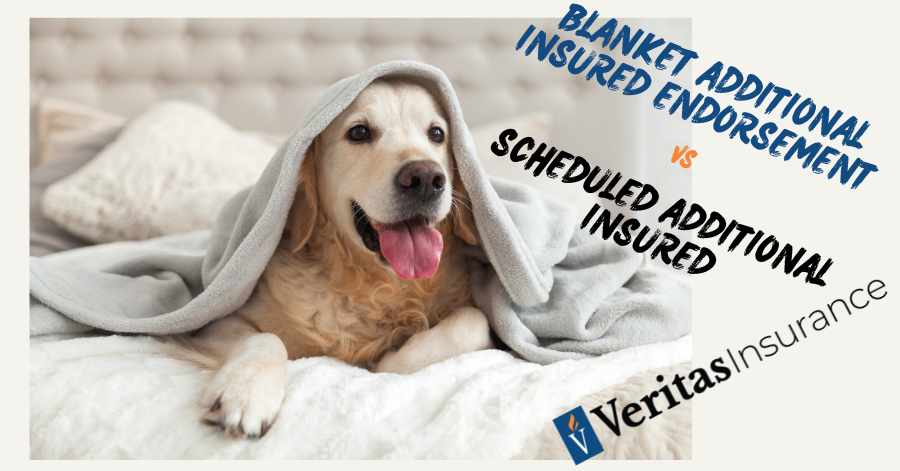5 min read
The Definitive Guide to Reading a Certificate of Insurance
 Andrew Darlington
:
June 25, 2024 at 10:41 AM
Andrew Darlington
:
June 25, 2024 at 10:41 AM

Click Below and Listen To "The Definitive Guide to Reading a Certificate of Insurance"
Navigating a Certificate of Insurance, or the ACORD 25 Form, can be a headache, and many people don’t even try to check the details. However, the details are important and we can show you how to understand the form easily.
A COI is a one-page standardized form that summarizes the coverage that the insured has. It is commonly given to third parties as proof of insurance.
Let's first look at the top part of the form
At the very top of the form, in the box marked A, is the date that the certificate was made. Thus, as of that date, the information is true. However, after that date, things could have changed.

Underneath that, you will see a couple of important disclaimers. It is important to note that a COI cannot change insurance coverage, it is just a description of the policy that already exists.
In the box we marked B, you should see the name of the insurance agency or broker that created and sent the COI. It is important to get the COI directly from the agency rather than from the insured person. In box C, you will see the agency’s contact information in case you want to reach out to them.
In box D, you will see the insured, also known as the “Named Insured.” This is the person whose insurance policy it is. Make sure that the name in this box is the same as you are putting on paychecks–if it's a slightly different name or a different name, you might have a problem.
Box E lists all of the Named Insured’s insurance carriers. Sometimes there will just be one carrier, but sometimes the person will have policies with several different carriers, such as having worker’s comp from one carrier and general liability from another carrier. Box F has the NAIC # for each insurer. The NAIC is a number that you use to look up insurance carriers on AM Best, a website used to check the reliability of insurance companies.
The Coverages Section
We can now move down and look at the Coverages Section. In the boxes we marked A, the insurance carrier for each policy is listed. In each of those spots, a letter (from the section listing the carriers as Insurer A, Insurer B, etc.) is used to denote which insurer is providing each policy.

The boxes marked B will state whether there is additional insured status on each of the policies.
Similarly, the boxes marked C say whether each policy has a waiver of subrogation or not.
Box D lists the policy number for each policy, which is just an identification used by the insurance companies. Be sure that it has a policy number and not just a binder number.
Pay close attention to the boxes marked E and F. Those state the effective date and expiration date of each policy. Be sure to confirm that your subcontractor’s work will happen within these dates. When the expiration date comes around be sure to ask for another COI to confirm that they renewed their policy. Check to ensure that there is no lapse in coverage between the dates on the COIs you receive.
The boxes marked G will have the limits of each policy. You will want to make sure that they are high enough for the needs of your project. If you are wondering about how high of a limit you need your subcontractors to have, reach out to us! We would be happy to help!
Let’s now take a more detailed look at each of the types of insurance represented on the COI.
Commercial General Liability
Under the Commercial General Liability section, the first thing to note is whether the policy works on a Claims-Made basis or an Occurrence basis (boxes A and B, respectively). Occurrence means that it will cover claims whenever the incident itself occurred during the policy period. Claims-Made means that it will cover claims when the claim itself is made during the policy period. Since claims could arise long after the actual occurrence of the incident, you want to make sure that the “OCCUR” box is checked. If the Claims-Made box is checked, reach out to us so we can tell you other signs to watch out for.

Below that, the COI will specify how the limits work. There are three options. It could work on a policy basis (box C), meaning that any claim on any project covered by the policy will contribute to the limit. Thus, insurance claims because of work that the subcontractor is doing for someone else could mean that the limits on claims at your site are decreased. If it is on a project basis (box D), then the full aggregate limit can be used for each project the subcontractor does. If it is on a location basis (box E), then the full aggregate limit can be used at each location the subcontractor works at. Generally, per project or location are preferable options.
Automobile Liability

In this section, box A marks that any auto the subcontractor or his employees own, hire, or operate is covered under the policy. If this box is not checked, that should be because the company you are working with does not own any autos. In that case, be sure that at least boxes B and C are checked, indicating that automobiles that they hire (B) or do not own but drive (C) will be covered.
Umbrella/Excess Liability

Under the next section, there is an option for either umbrella or excess liability (A and B respectively). These are both policy options that cover someone above the limits of the other policies. Umbrella coverage is generally better. Excess coverage just increases the limits of the policies that already exist. Umbrella coverage does that and also provides some additional types of coverage not already found in the other policies.
Under C and D, once again, an occurrence basis is preferable. It needs to be an occurrence basis if it was an occurrence basis above.
E and F list whether there is a deductible or a retention amount, which could be helpful to know.
Workers Compensation and Employers Liability
Under this section, there is a box (box A) that says whether anyone is excluded from workers comp.

At the spot marked B, note that additional insured status is N/A (not applicable) as an option for workers comp. You cannot be named as additional insured for workers comp. That is not possible under workers comp policies.
Boxes C and D note whether the workers' comp policy is “per statute” or “other.” There are many possible reasons why it could be “other.” Some states with a monopolistic law regarding workers comp may not allow the per statute box to be checked. Some states won’t allow the per statute box to be checked if the limits are more than the state minimums. If the “other” box is checked, you should ask why.
The Bottom of the COI
We are almost to the end! The next box (A) is for further description. Some things can sometimes be put in this box, such as project names, specific waivers of subrogation, a listing of excluded officers, or other policy provisions. However, you cannot change the policy using a COI, so the description can only be a description. The agency cannot just put new policies that don’t already exist into this box for you.

Box B names the certificate holder. This box should have your name and address.
Box C speaks of notice of cancelation. Old certificates used to contain language about a guaranteed 30-day notice of cancellation, but the current certificates just say that you will be notified “per the policy provisions.” Unfortunately, most policies do not provide for any notification.
In box D, be sure that the authorized representative box is signed by the insurance agent, and also be sure that you got the form from the agent directly, not from someone else.
Lastly, in box E, be sure that it is the most recent ACORD 25 form–it should say ACORD 25 (2016/03). If it doesn’t, that might be a sign that the COI is fake.
We hope this guide to Certificates of Insurance has been helpful! If you have any questions, please reach out to us, we are happy to help!
Veritas Risk Management, Inc. offers proactive risk management services covering a wide variety of topics. Veritas Risk Management, Inc. does not engage in the practice of law, accounting, or tax consulting. We encourage everyone to consult with his or her own professional advisor for details concerning his or her specific facts, situations, and circumstances.

1 min read
Common Mistakes to Avoid when Filing a Worker Compensation Claim
Navigating Workers' Compensation Claims When you're injured on the job, filing a workers' compensation claim is crucial for covering your...





%20(8.5%20%C3%97%208.5%20in)%20(8.5%20%C3%97%208.5%20in)%20(8.5%20%C3%97%205.5%20in)%20(7.8%20%C3%97%205.5%20in)%20(1).png)
